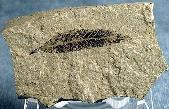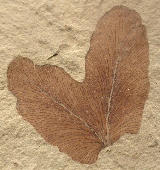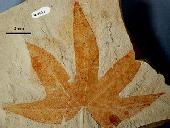|
 See More Images See More Images
(27 total)

Salix sp.
© 1998 Dr. Richard Paselk, Humboldt State University Natural History Museum

Lygodium kaulfussi
© 2005 The Virtual Fossil Museum

Platanus racemosa
© 2004 UCMP
|
What are Dicots? Dicots comprise more than half of all the living flowering plants, including economically important plants like coffee, potatoes, and olives, as well as large trees like oaks and maples. They also include cacti and most of the large, showy flowers you may see in a flower shop. Dicots get their name from having two cotyledons, or “seed leaves,” which transport nutrients from the seed to the developing embryo. Dicots are most easily recognized by the net-like or branching arrangement of veins in their leaves. The fossil record of dicots is a little more complete than for the monocots, and it extends back to the Middle Cretaceous. First known fossil occurrence: Cretaceous. Last known fossil occurrence: Quaternary. This group has living relatives. Cool Dicots links: Search for images of Dicots on Google |
|




